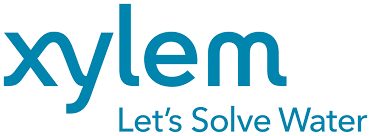Award-Winning Invention Could Change Drinking Water Treatment

As featured on Impeller | Water News from Xylem
You wouldn’t think that the graphite inside a pencil could lead to an invention that detects and removes harmful bacteria from water. But that is exactly what the 2017 Stockholm Junior Water Prize winners have done. Learn how their fast-acting system could change how water is tested and treated.
Ryan Thorpe and Rachel Chang have known each other since preschool. Now 17 years old, they recently won the Stockholm Junior Water Prize for a system that uses biosensors to detect individual colonies of four of the most common pathogenic bacteria found in water.
Thorpe and Chang are now seniors at Manhasset Secondary School on Long Island, New York. Impeller interviewed them during World Water Week in Stockholm just after they won their prize.
How does it feel to win?
Chang: It’s really incredible, it’s the most amazing feeling in the world, especially because all the projects here are so good. To be able to come out on top is just an amazing feeling.
Thorpe: It was such an amazing week, it was so fun and chock full of experiences that I will remember throughout my life. I couldn’t have imagined it ending any better.
Could you explain what your system does?
Chang: We created a system to detect and purify water contaminated with bacteria. We worked with e. coli, shigella, cholera, salmonella, some of the most common waterborne diseases today. We created graphene biosensors that generate an electric signal when bacteria come into contact with them. By reading the current on a screen, we can tell when bacteria are present.
What is graphene?
Chang: Graphene is actually a form of carbon. We harvested our graphene from pencil lead, the graphite in pencils. That is one of the elements of our project that makes it cost effective, if it were to be implemented in the developing world. Graphene is also very conductive, so that allows us to rapidly detect bacteria.
Thorpe: Then for the purification we used Arduino microprocessors, which are basically computer parts that you can code to perform a wide variety of tasks. What’s great about these microprocessors is that there is a community working with them that has a wealth of information, so you can learn very quickly. We coded the processors to control a motor, so that after we detect bacteria, it will inject chemicals into the water to safely and efficiently eliminate the bacterial presence.
Is the graphene biosensor placed in the water?
Chang: The sensor looks like a flat, little square. Because we worked in a high school lab during this entire process, we had to use a water-based paint, instead of the typical silver-based paint. This meant that we could only drop small water samples on top of the sensor. In the future, if we were able to continue this in a more professional lab, the entire sensor could be submerged into a water source so it could continually monitor the bacterial presence on site.
Thorpe: Our sensor is connected to a measuring device, which is connected to a computer that will show the results on a screen. You see a two-dimensional graph. If there are no bacteria in the water, there will be a red line that stays constant. When there are bacteria in the water, the current will fluctuate.
Does one sensor detect all four types of bacteria?
Thorpe: We made four different biosensors. Each of the different biosensors detects the model organism for each of the four major bacterial pathogens. Because these bacterial pathogens produce different specific analytes, for example e. coli produces D-lactate, as opposed to shigella which produces glycerol, you can identify which bacteria it is and determine its presence.
How quickly does this work?
Chang: The detection occurs instantaneously. As soon as you put the sample on the biosensor, the current will begin changing if bacteria are present. That happens instantly. The purification takes about ten seconds to eliminate bacteria.
What do you use to eliminate the bacteria?
Thorpe: We used sodium hydroxide and hydrogen peroxide. It’s been shown in previous studies that hydrogen peroxide leads to a significant increase in alkalinity. It will create hydroxyl radicals, which are compounds that are used to replace chlorine. Although chlorine can take down a wide range of organisms, in some cases it can still remain problematic for human consumption. What’s good about hydroxyl radicals is that the byproducts that they form are completely safe, and they have very short lifespans. They will kill a wide range of organic material very rapidly, however, after that they become inactive so they are safe for consumption.
How could your system be used in different applications?
Thorpe: This device can be used for identification and immediate purification processes. It really has a wide range of applications in terms of both the developing and the developed worlds. It can be placed on site in a drinking water source in the developing world, and it can also be placed in piping systems in the developed world.
How is your method different from what would normally be done?
Chang: For detection, PCR is the conventional method that is being used. It amplifies the DNA of the bacteria and detects it, which requires laboratory expertise and is really difficult and very expensive. The machine that you need for this costs about $5000, and you need to keep on purchasing new materials to keep running it. Our system is much more user friendly, it’s much cheaper, and it’s able to detect much lower amounts of bacteria instantaneously.
How did you get interested in water treatment?
Chang: I’d always been really interested and passionate about the environment. Then I was reading a journal article about the standard methods of detection for bacteria, which can take one to two days, and even up to a week. These methods also have detection limits of up to 1,000 colonies of bacteria, but the World Health Organization states that even one colony of bacteria in 100 ml of water is unsafe for consumption. So I really wanted to create a system that would improve upon these methods, and be able to reach the standards of the World Health Organization and expand clean water access.
Thorpe: I was really interested in water scarcity, and how a lot of articles point out that water scarcity is going to be the next source of global conflict. I came across this specific interest because every year our high school creates a quasi-journal where people submit their research abstracts. I was looking at very old ones, and I saw this word biosensor, and the newer journals didn’t have this word, so I looked it up. Basically, what a biosensor does is it takes something that we can’t see and converts it into a stimulus that we can see, and I really like that idea.
Do you have anything else you would like to add?
Chang: I guess that everyone really can make a difference. Even if it is just shutting off a faucet and making sure it doesn’t drip, that would save millions of gallons of water if everyone did that. Everyone together united can make a difference with water.
Thorpe: The solutions are out there, if you really try. If you just sit down and write down a list of all the different possible solutions to a problem, and you try to find out which one is the best, you are going to be able to solve it.
Chang: Hard work and perseverance definitely pay off.

